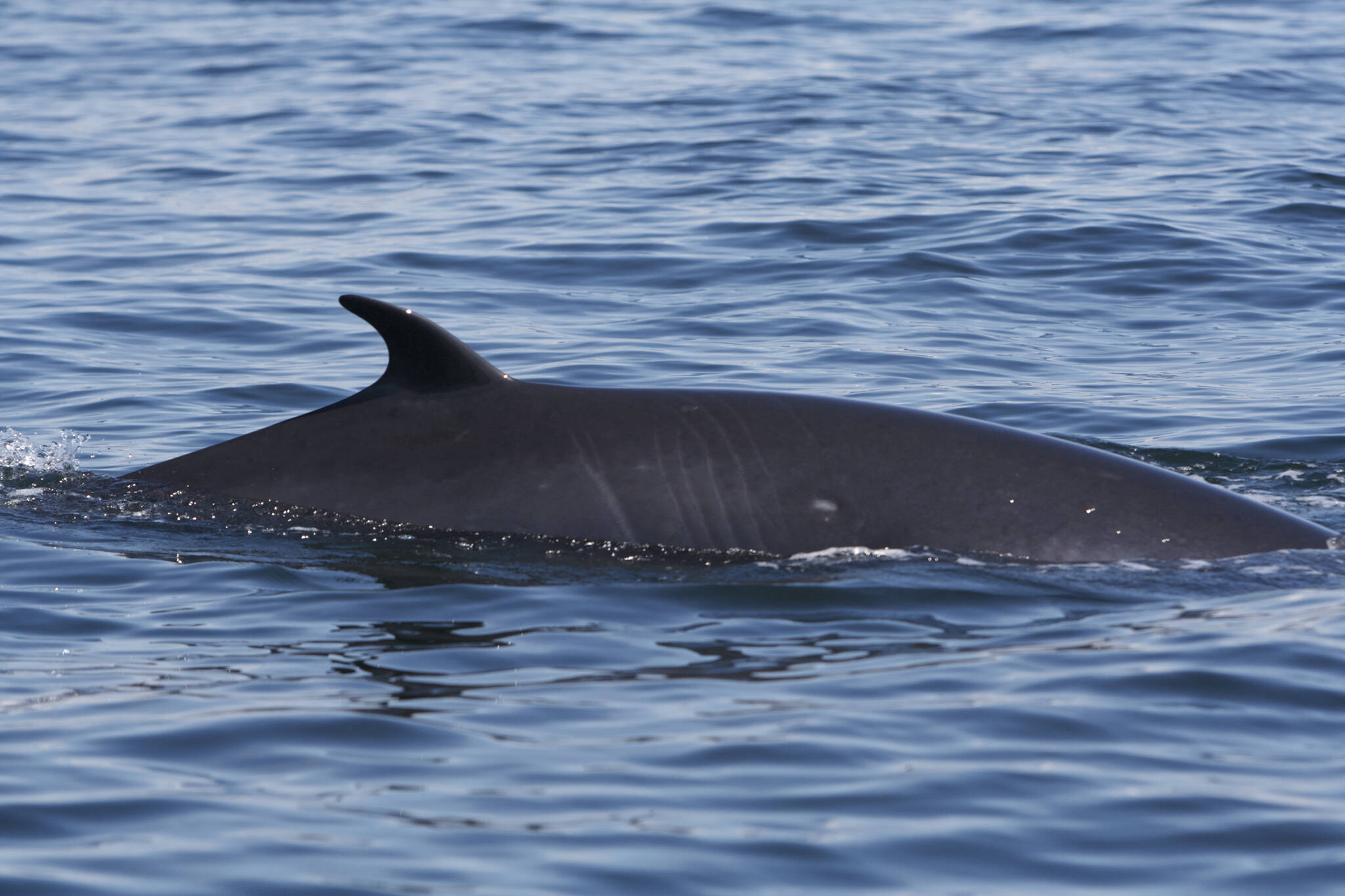A 24-foot minke whale died after being struck by a large vessel in San Juan County waters.
“It had a mouth full of tiny fish so it was likely feeding and rolling around and not paying attention,” said Dr. Joe Gaydos, chief scientist for the SeaDoc Society.
After the crew of a commercial vessel found the female baleen whale floating in Cayou Channel on Oct. 5, it was reported to the Whale Museum’s stranding hotline. It was located by San Juan County Marine Mammal Stranding Network Coordinator Jessica Farrer and towed to a private beach on Blakely Island by the U.S. Coast Guard.
Under the authorization of the National Oceanic and Atmospheric Administration, scientists and veterinarians from the stranding network, Cascadia Research Collective, World Vets and the SeaDoc Society performed a complete necropsy.
“It takes a lot of hands,” Gaydos said.
While lab results of tissue samples are still pending, an initial exam suggests the mammal was struck by a large boat. Severe bruising was present in almost a straight line on the left side of her body, extending from just behind her head to the end of her abdomen. Her fifth rib was broken in half, part of her vertebrae was broken and there was extensive bleeding in the lungs.
“This was definitely not from a pleasure craft. We are guessing it was a container ship,” Gaydos said. “Some of the boats are so big that they don’t know they’ve hit anything.”
Added Farrer, “While it is always sad to find a dead whale, we were pleased that we could determine the cause of death. It is work like this that will provide the data that will one day enable us to modify shipping lanes or vessel speeds to reduce this type of tragedy.”
Minke whales first started being studied in the San Juan Islands in 1980 and many are known individually. Marine project manager for San Juan County Frankie Robertson has been tracking the individual whales since 2005 with the Northeast Pacific Minke Whale Project. On average there are maybe 12 minkes — thought to be primarily females — encountered per year in the county.
“I am kind of the last hurrah for minke whales in Washington state,” Robertson said. “They appear to be naturally rare in Puget Sound. There are so many other species here competing for forage fish and that’s what they eat.”
The deceased minke is one that Robertson identified as SJ20-32 and was fondly known as Al Pacino by the Minke Whale Project due to scarring on her body.
“We tend to name them for aging or dead rockstars or movie stars. As minke whale researches I feel we have that prerogative,” laughed Robertson. “Maybe she should be Allie Pacino.”
Strangely, another minke whale, Zeke, who was thought to be around 40 years old, died last week from a transient killer whale attack.
“We’ve lost two in a short time,” Robertson said.
Gaydos explained that the population of Gray and Humpback whales in the Salish Sea is growing, and when combined with large vessels traveling faster than ever before, it has resulted in more collisions.
“Necropsies must be permitted under NOAA. This is to ensure all the information goes to where it can make difference,” Gaydos said. “You can see trends and make adjustments. People are really trying to do the right thing, and I love that. The shipping companies don’t want to hit whales either.”
Gaydos calls minkes the “greyhounds of the baleen whales,” who can often outrun an attack from an orca. This minke had scars on its body from either cookie-cutter sharks or lamprey as well as scars on its tail from killer whale bites.
“Minke whales are real athletes,” he said.
It’s challenging to determine the age of the deceased mammal because unlike orcas, who have teeth that can be bisected and their age counted by the number of rings inside (like trees), minkes have baleen, a bristle-like filter-feeding system inside their mouths. These baleen plates trap the whales’ prey — krill, plankton and small fish — from seawater inside their mouths. The ovaries of the dead whale indicate she was of child-bearing age.
Instead of cutting through the bone, the team of scientists disengaged the skeleton so it can be preserved after it decomposes naturally on the beach. Farrer said it is possible the minke whale skeleton will be preserved in the future for the public to view.
This is the first minke whale that Gaydos has observed in detail.
“As sad as it is when this happens, the minke was an amazing creature to see up close,” he said.
To report a marine mammal stranding in San Juan County call 1-800-562-8832 or email hotline@whalemuseum.org.




